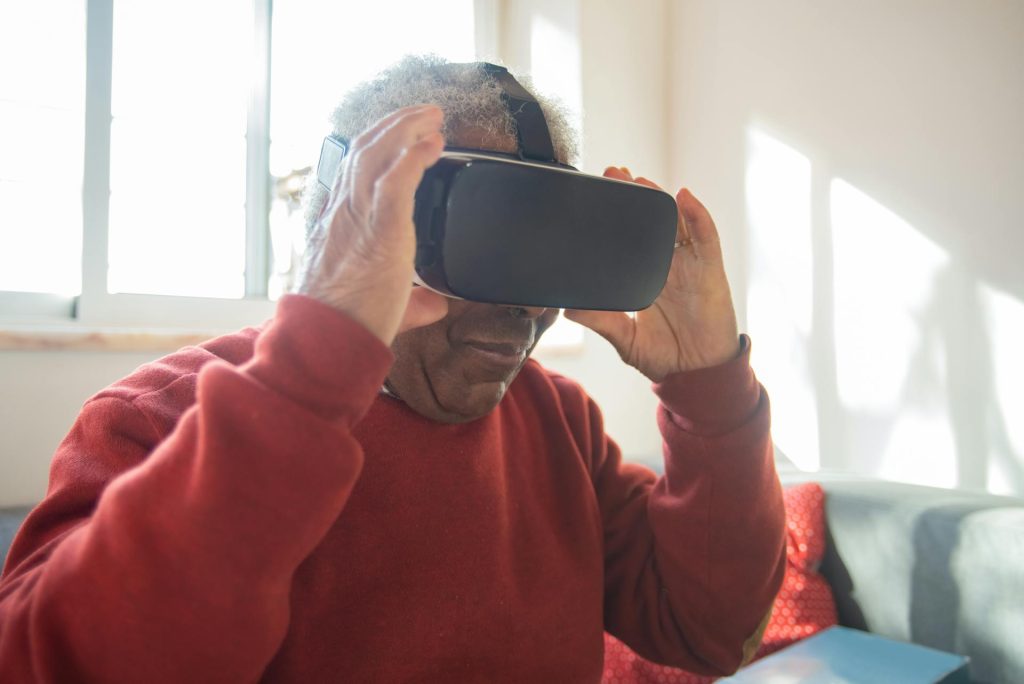Traditionally, retirement has been shaped by financial readiness and lifestyle choices, but technology will now also play a significant role. Healthcare, smart devices, artificial intelligence, and financial tools are already changing the way we age. Rather than dreading retirement as a period of decline, many future retirees will experience it as a period of independence, connection, and opportunity.
Whether it’s wearable health monitors or AI-powered retirement planning, technology is making aging easier and, in many cases, more enjoyable. In this article, we will explore how innovations will reshape retirement and what that means for people planning their futures now.
Table of Contents
Toggle1. Smarter Healthcare at Your Fingertips
In 2025, a 65-year-old retiring can expect to spend an average of $172,500 on health care and medical expenses, according to Fidelity Investments’ 24th annual Retiree Health Care Cost Estimate. It’s no surprise, then, that 80% of respondents to an RBC Wealth Management survey are concerned about funding retirement healthcare.
Aside from medical expenses, older adults fear losing their independence. However, technology is making it easier than ever to monitor, prevent, and manage health conditions.
- Wearable devices. Tools like the Apple Watch and Fitbit can monitor heart rate, blood oxygen levels, sleep patterns, and even irregular heartbeats. We can expect even more advanced sensors in the future, capable of spotting early signs of chronic diseases.
- Remote monitoring. Blood pressure, glucose levels, and mobility can be tracked and sent directly to doctors through devices. As a result, hospital visits are reduced, and issues can be identified and addressed before they escalate into emergencies.
- Telemedicine. Virtual doctor visits have become increasingly common since the pandemic, and they are likely to remain a staple for some time to come. By reducing travel time to appointments, retirees can access care more quickly.
Overall, with more tools, retirees can remain proactive and independent well into old age, rather than fearing health decline.
2. Robotics and Smart Homes for Independence
A top priority for many retirees is to remain in their own homes rather than move into an assisted living facility. In fact, AARP’s national 2024 Home and Community Preferences Survey found that most Americans age 50 and older (75%) want to remain in their current homes.
Thanks to smart home technology and robots, this will become more practical than ever before.
- Voice assistants. Using Alexa, Google Assistant, and similar devices, retirees can store medication information, control lights, and even request assistance.
- Robotic helpers. We already have robots that can fetch objects, vacuum floors, and provide companionship. As robots become more sophisticated, they’ll assist with more complex tasks such as meal preparation and mobility.
- Home automation. With smart thermostats and fall detection sensors, homes will be equipped to meet the needs of aging residents.
As a result of technology, many retirees will remain in the comfort and familiarity of their homes rather than move into specialized retirement communities.
3. Financial Tools for Stress-Free Planning
Another primary reason for retirement anxiety is money. Many people worry about running out of savings, managing investments, and handling unexpected expenses. In fact, according to a survey by Allianz Life, 64% of Americans are more concerned about running out of money than dying.
Here are some areas where technology is already making a difference;
- Robo-advisors. With the help of algorithms, services like Betterment and Wealthfront can create and manage retirement portfolios for a fraction of the cost of having a human advisor handle the work.
- Budgeting apps. Retirees can track their spending and maintain a budget by using programs such as Mint or You Need a Budget (YNAB).
- AI financial planning. Through simulations of different retirement scenarios, users can understand how healthcare costs, inflation, or market fluctuations may affect their finances in the future.
These tools help retirees understand their financial future and automate many decisions, reducing stress and enabling them to focus on enjoying retirement.
4. Lifelong Learning and Connection Through Digital Platforms
Personal growth and social engagement don’t end with retirement. Utilizing technology to learn, connect, and serve unlocks new possibilities.
- Online education. Retirees can take courses on a wide range of topics, from history to photography, through platforms like Coursera, Udemy, and MasterClass. Studies have shown that lifelong learning improves cognitive health and keeps people mentally sharp.
- Virtual reality (VR). Without leaving your living room, you could visit Paris or walk along the Great Wall of China. Using virtual reality, retirees will be able to interact with the world in a more immersive way.
- Social platforms. Online communities, video calls, and interest-based groups can help retirees stay connected and reduce feelings of loneliness.
By harnessing the power of technology, retirement can be more than just a time for rest. It can also be a time for growth, discovery, and connection.
5. AI-Powered Personalization in Daily Life
The rise of artificial intelligence (AI) will radically transform retirement. With AI, each retiree’s needs can be customized, instead of relying on a one-size-fits-all solution.
- Healthcare. By analyzing a patient’s medical history, artificial intelligence can recommend diet, exercise, or treatment plans tailored to their individual needs.
- Daily routines. Using smart assistants, you can set reminders for appointments, adjust the lights in the evening, and even suggest social activities.
- Financial planning. Using artificial intelligence, retirement strategies can be adjusted automatically as circumstances change.
The result? A retirement that adapts seamlessly to the individual, providing support without constant effort or decision-making.
6. Transportation and Mobility Innovations
In retirement, mobility is another concern. As a result of technological advances, retirees can travel more easily and efficiently.
- Self-driving cars. With autonomous vehicles, retirees can maintain their independence without relying on others.
- Ride-sharing services. Older adults are already benefiting from apps like Uber and Lyft, and future versions will be tailored to their needs with options for assistance.
- Mobility devices. As wheelchairs, scooters, and even exoskeletons become more advanced, retirees will have more freedom to move around.
You won’t have to worry about getting to the grocery store, a friend’s house, or a doctor’s appointment — it will be safer, easier, and faster.
7. The Future of Retirement Communities
While many retirees will age in place, retirement communities themselves are evolving as well:
- Smart campuses. To improve quality of life, communities will integrate sensors, telehealth, and automated safety systems.
- On-demand services. Whether it’s food delivery or virtual fitness classes, residents will have a wide range of conveniences at their fingertips.
- Intergenerational design. In addition to bridging gaps and preventing isolation, technology will allow retirees to remain more connected to younger generations.
Tomorrow’s communities won’t just focus on care — they will focus on innovation-driven, vibrant living.
Final Thoughts
Today, retirement means entering a new phase of life with possibilities that previous generations could only dream about. Advances in healthcare, robotics, artificial intelligence, and financial tools will make aging appear less like decline and more like reinvention.
It’s no secret that the future belongs to those who prepare financially, embrace technology, and stay curious about it. Upon retirement, you won’t just be getting older, but entering an era of independence, connection, and opportunity thanks to technology.
FAQs
Will technology replace human caregivers in retirement?
Not entirely.
Even though technology will assist with routine tasks, such as reminders, mobility, and monitoring, human caregivers will still be essential for emotional support and complex care.
What if I’m not “tech-savvy”?
Simplicity will be at the heart of future devices. With voice commands, intuitive apps, and hands-free automation, retirees will have no problem using technology.
How can I afford all this technology in retirement?
Compared to traditional options, many tools like telemedicine and robo-advisors actually lower costs. With increasing adoption, the prices of smart wearables and home automation systems are expected to fall.
Will technology make retirement communities obsolete?
In addition to smart homes allowing retirees to live independently for longer, retirement communities will adapt by integrating tech into their services. In the future, they’ll likely become hubs for wellness, connection, and shared experiences.
What should I do today to prepare for a tech-driven retirement?
You can get started by saving early, learning how to use digital tools, and keeping an open mind about innovation. By taking small steps now, like learning to use financial apps or wearable health devices, we’ll be able to make the transition more smoothly in the future.
Image Credit: Kampus Production; Pexels

















